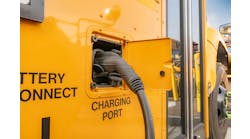Closed mines may not immediately come to mind as good sites for renewables, storage and microgrids.
However, through its program, Sunshine for Mines, Rocky Mountain Institute (RMI), in partnership with BHP, the world’s second largest mining corporation, has found that closed mines often make excellent locations for green energy development.
In fact, cost comparisons show that developing renewables, storage and microgrids at closed mines can be significantly more economic than siting such projects elsewhere.
The value proposition is especially high if the projects are designed to reap multiple revenue streams and provide services to utilities, said Ned Harvey, RMI managing director.
“I’d estimate that building on a legacy site in partnership with a mining company, we can get at least a 10 percent improvement on a standard bid,” he said.
That’s good news, given the expected amount of renewable energy RMI sees as feasible on legacy mining sites. Looking at BHP’s combined sites, for example, RMI identified wind and solar potential of about 0.5 GW, according to a recent brief from RMI.
“We did an assessment of BHP’s portfolio in the US last summer and decided which sites would be good for renewable energy and what different systems would look like to create value,” Harvey said.
The assessment also examined the potential to work with utilities to provide needed ancillary services.
“There are significant opportunities,” said Harvey. “One of the sites in Arizona has enough land for 400 MW of solar. Other sites have enough land for that amount of solar or wind.” In the Arizona case, the nearby substation could handle about a quarter of the solar, but could be expanded, he noted.
Right now, all of the Sunshine for Mines projects are still in the development phase, Harvey said. RMI doesn’t work with coal mines, he noted.
Advantages of working with mining companies
One of the main advantages of working with mining companies is their expertise as developers. In addition, the legacy mines generally have already completed environmental and permitting reviews. The mining companies often have internal staff members who can address predevelopment issues at lower costs. What’s more, most of the sites have substations on site.
“You do far less work in terms of building lines or connecting to substations,” Harvey said.
Not only are these sites well set up for development. Many are appropriate for energy storage and renewable energy, said Harvey. They may have deep shafts or large parcels of flat land on which to site batteries, wind turbines or solar collectors.
RMI looks at a number of storage options for these sites, including compressed air storage, lithium ion batteries, and pumped hydrogen, he said.
Not trying to sell a product
But siting advantages aren’t the only reason legacy mines offer good locations for renewable energy, storage and microgrids. Working with mining companies, RMI takes a big-picture view of projects, looking at many different options and combinations of options. That gives these Sunshine for Mines projects an edge.
“The world of renewables largely is a company with a product to sell,” said Harvey. “They are solar or wind or battery developers. They are comfortable with this or that. Without being constrained by just doing solar or wind, we look at how we can optimally use a site to produce the most value possible for the local utility or a corporate offtaker.”
At some point, the Sunshine for Mines program would like to work with multiple companies and provide renewables and storage to companies that aggregate distributed energy, including those that form virtual power plants.
The challenge: Getting everyone comfortable with the idea
“We are probably close to terawatts in terms of what we can do around the world economically,” Harvey said.
Mines that don’t choose renewables, storage and microgrids are likely to opt for grid power or diesel generators for electricity.
“And all over the world today, solar, storage and microgrid solutions are competitive with diesel power. The challenge is getting everyone comfortable with this,” he said.
Track news about renewables, storage and microgrids. Subscribe to the free Microgrid Knowledge newsletter.







